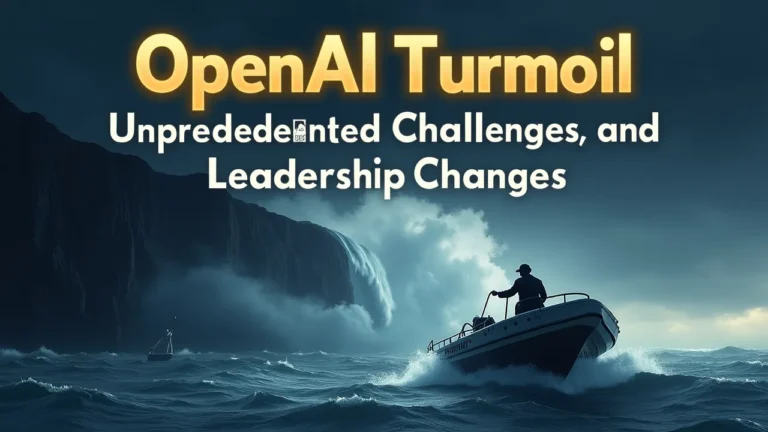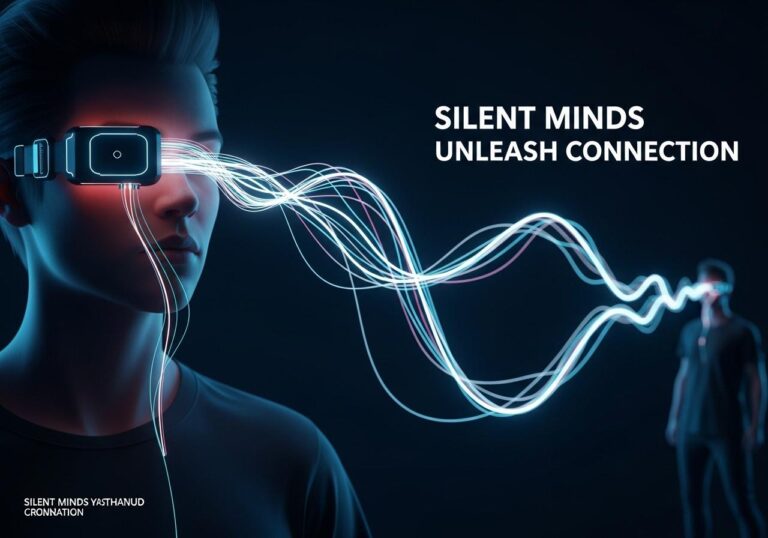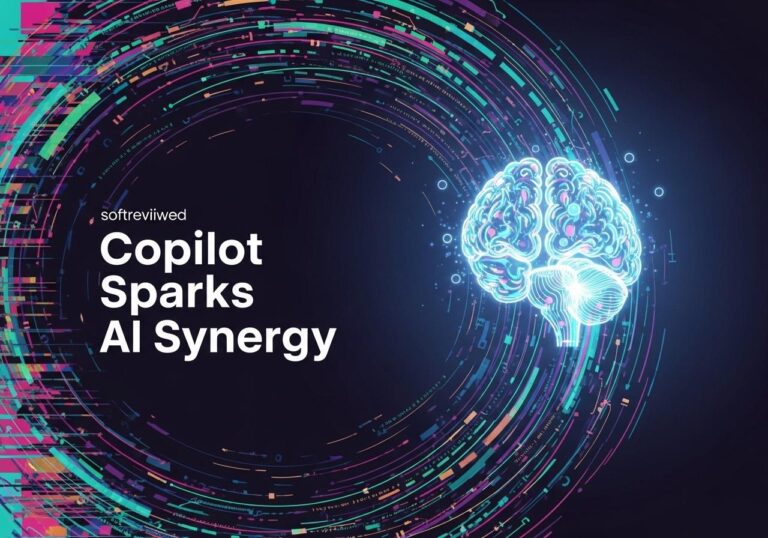🤖 AI Ethics and Challenges
Key issues and lessons from recent developments in AI technology and governance
🚨 Employee Concerns
Current and former OpenAI employees expressed concerns about the potential risks of AI and the need for better transparency and safeguards.
📰 AI-generated Misinformation
Threat actors used AI to generate high volumes of text and images with fewer language errors, creating the appearance of engagement and spreading misinformation effectively.
🛡️ Defensive Design
AI models designed with safety in mind can counteract malicious activities, and AI tools aid in investigations.
🔍 Transparency and Oversight
The need for increased transparency in AI research and stronger protections for whistleblowers was highlighted by OpenAI employees.
📊 Leadership Lessons
Effective crisis management, owning mistakes, and aligning the organization with its mission are critical leadership takeaways.
OpenAI, once the undisputed leader in artificial intelligence research and development, is facing a series of unprecedented challenges that have left many wondering about its future. From high-profile departures to financial concerns and increased government scrutiny, the company seems to be navigating troubled waters. This article explores the recent events surrounding OpenAI and their potential implications for the AI industry.
The Exodus of Key Figures
One of the most significant developments at OpenAI has been the departure of several prominent figures who played crucial roles in the company's rise to prominence.
André Karpathy's Departure
In February 2024, André Karpathy, a pioneer in AI advancement, decided to leave OpenAI. Karpathy was instrumental in developing convolutional neural networks for image recognition, technology that found applications in Tesla's self-driving cars. His departure marked the beginning of what some have called a "brain drain" at the company.
Logan Kilpatrick Joins Google
A month after Karpathy's exit, Logan Kilpatrick, OpenAI's head of developer relations, left the company to join Google's AI division. Kilpatrick had been a prominent face of OpenAI, often representing the company alongside CEO Sam Altman on social media platforms.
Ilya Sutskever Steps Away
Ilya Sutskever, one of OpenAI's co-founders and a key figure in the company's early success, also decided to leave. Sutskever's departure was particularly notable given his involvement in the controversial decision to remove Sam Altman from his position as CEO in November 2023.
Jan Leike's Critical Departure
Perhaps the most impactful departure came when Jan Leike left OpenAI, sharing his concerns about the company's priorities in a widely-read Twitter thread. Leike expressed disappointment with OpenAI's focus on "shiny products" at the expense of security, safety, and alignment research.
Non-Disparagement Agreements and Equity Concerns
Leike's public criticism shed light on a controversial practice at OpenAI: non-disparagement agreements tied to equity. Employees who left the company were reportedly required to sign agreements preventing them from speaking negatively about OpenAI, or risk losing their vested equity.
This policy came under scrutiny following Leike's revelations, leading OpenAI to revise its practices. The company has since stated that employees will not lose equity for speaking out and has begun implementing new agreements without non-disparagement clauses.
Recent Leadership Changes

In August 2024, OpenAI experienced another significant shake-up with the departure of two key figures:
John Schulman: A co-founder of OpenAI, Schulman left to join Anthropic, a competitor focused on AI alignment research.
Peter Dang: A product leader who had joined OpenAI in 2023 after stints at Meta, Uber, and Airtable.
Initial reports also suggested that Greg Brockman, OpenAI's president and another co-founder, had left the company. However, Brockman clarified that he was taking an extended sabbatical until the end of 2024, citing the need for a break after nine years of intense work.
Financial Pressures and Operational Challenges
OpenAI's challenges extend beyond personnel issues. Recent reports have highlighted significant financial pressures facing the company:
- Projected losses of $5 billion
- Annual expenditure of $7 billion on model training
- $1.5 billion spent on staffing
These figures have led to speculation about OpenAI's long-term sustainability, with some analysts suggesting the company could face bankruptcy within 12 months if current trends continue.
Legal Battles and Ethical Concerns
OpenAI is also grappling with several legal and ethical challenges:
Copyright Infringement Allegations
A class-action lawsuit has been filed against OpenAI, alleging that the company scraped content from YouTube and other sources without proper authorization. Notable content creators, including Marques Brownlee, have expressed frustration with this practice.
Elon Musk's Lawsuit
Elon Musk, a former OpenAI backer, has filed a lawsuit against the company, claiming that it has strayed from its original mission by prioritizing commercial interests over public good.
Government Collaboration and Scrutiny
OpenAI's increasing collaboration with the U.S. government has raised eyebrows:
- Endorsement of the Future of AI Innovation Act
- Pledge to provide early access to new models for government review
- Appointment of retired U.S. Army General Paul M. Nakasone to the board of directors
These moves have led to concerns about the potential for government influence over AI development and deployment.
Product Development and Market Position
Despite its challenges, OpenAI continues to generate excitement with its product announcements. However, the company has faced criticism for its approach to product releases:
Sora: OpenAI's text-to-video model generated significant buzz but has not been widely released, allowing competitors like Runway and Pika to gain market share.
GPT-4: While initially groundbreaking, GPT-4 now faces stiff competition from models developed by Google, Anthropic, and others.
DALL-E 3: OpenAI's image generation model has been surpassed in many aspects by competitors like Midjourney and Stable Diffusion.
This pattern of announcing exciting technologies without broad public releases has led to questions about OpenAI's ability to maintain its market leadership.
The Road Ahead for OpenAI
As OpenAI navigates these turbulent times, several key questions emerge:
- Can the company maintain its innovative edge despite the loss of key personnel?
- How will OpenAI address its financial challenges while continuing to invest in cutting-edge research?
- What impact will increased government collaboration have on OpenAI's independence and public perception?
- Can OpenAI strike a balance between rapid product development and thorough safety considerations?
The answers to these questions will likely shape not only OpenAI's future but also the broader landscape of AI research and development.
Industry Implications
The challenges facing OpenAI have significant implications for the AI industry as a whole:
Talent Migration: The departure of key figures from OpenAI may lead to a redistribution of talent across the industry, potentially accelerating progress at other companies.
Funding and Investment: OpenAI's financial struggles could impact investor confidence in AI startups, leading to more scrutiny of business models and sustainability.
Ethical AI Development: The controversies surrounding OpenAI may lead to increased focus on ethical AI development practices across the industry.
- Regulatory Landscape: OpenAI's closer ties with government agencies could signal a trend towards greater regulatory oversight of AI development.
Conclusion
OpenAI's current challenges represent a critical juncture for the company and the AI industry. While the company has faced setbacks, it remains a significant player in the field of artificial intelligence. The coming months will be crucial in determining whether OpenAI can overcome its current difficulties and maintain its position as a leader in AI innovation.
As the situation continues to evolve, industry observers, researchers, and enthusiasts will be watching closely to see how OpenAI adapts to these challenges and what implications its choices will have for the future of AI development. The company's ability to navigate these turbulent waters will not only shape its own future but also influence the direction of AI research and application for years to come.
Whether OpenAI emerges stronger from these challenges or faces further setbacks, one thing is clear: the landscape of artificial intelligence is rapidly changing, and the industry must be prepared to adapt to new realities, ethical considerations, and technological advancements.
OpenAI Leadership Crisis: Employee Sentiment
This chart illustrates the percentage of OpenAI employees who signed the open letter demanding board resignations and Sam Altman’s reinstatement.







